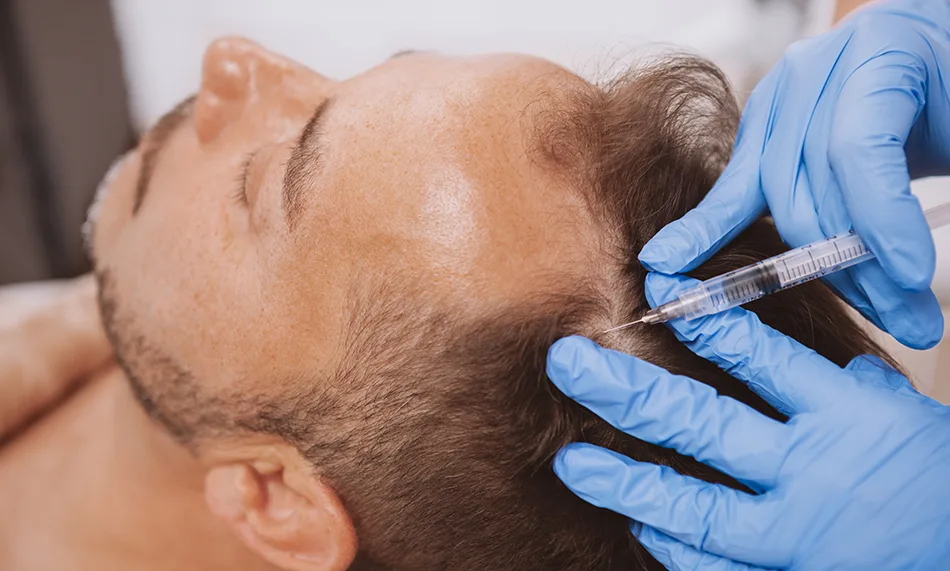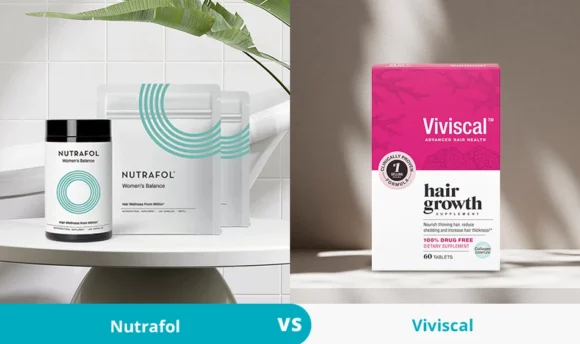Does PRP Work for Hair Loss? Examining the Efficacy
You might be ready to try something new to counter hair loss after poor success with other hair loss treatments. Could PRP injections solve your problems?

People are always on the lookout for new hair loss treatments. Medication, hair transplants, and laser surgery are all potential options, although these treatments only work for some. This leaves us searching for new methods to beat hair loss once and for all.
There is growing evidence to support platelet-rich plasma (PRP) therapy as a potential solution, but what is the PRP procedure, and does it really work for hair?
Does PRP Work for Hair Loss?
Platelet-rich plasma (PRP) therapy may be an effective hair loss treatment. It is considered a new therapeutic option for different types of hair loss, including androgenetic alopecia and female pattern hair loss, and an alternative option for alopecia areata.
When injected into the scalp, the platelets in platelet-rich plasma release multiple growth factors that assist in tissue regeneration and the wound-healing process. These platelets may enhance blood supply to the hair follicles and stimulate regrowth.
While a promising treatment, further research is necessary to identify the ideal PRP therapy regimen, such as dosage and the number of sessions needed.
Does PRP work for frontal hair loss?
PRP therapy is considered a beneficial treatment for male androgenetic alopecia – the most common type of hair loss in men that includes hair loss around the mid-frontal scalp. Catching frontal hair loss early helps increase your chances of hair regrowth in this area.
What Exactly Is PRP?
PRP, or platelet-rich plasma, is a combination of blood plasma (the liquid component of blood) and platelets (pieces of large blood cells). Platelets are essential for clotting the blood, slowing or stopping bleeding, and aiding wound healing.
Platelet-rich plasma comprises more platelets than a typical blood sample because the procedure increases the platelet concentration of the plasma using a centrifuge to remove the red blood cells.
Creating platelet-rich plasma starts with taking a sample from a patient’s blood. After processing, the concentrated platelets are injected into a particular body part to accelerate healing. For example, you might get a PRP injection for a knee injury.
As a hair loss treatment, platelet-rich plasma injections go directly into the scalp. Ultimately, your blood is utilized to support your body’s natural healing system.
How many PRP procedures are needed to see the results?
PRP for hair loss usually calls for three treatment sessions, administered 4–6 weeks apart. After this initial round of therapy, patients tend to return for maintenance treatments at least twice per year to continue providing the hair follicles with a boost of growth factors.
You will require multiple PRP treatments with regular follow-ups to ensure long-term results. Furthermore, results can vary from person to person due to factors like hair health, general health, and platelet concentration. These factors will determine how long hair regrowth takes.
How Effective Is PRP for Hair Loss?
PRP injected into the scalp appears to be an effective treatment for people dealing with hair loss. It contains numerous growth factors to boost new hair growth, and it may increase the thickness of the hair follicle, making way for healthier, stronger, and thicker locks.
Several studies support its effectiveness, particularly in treating male pattern baldness. In addition, it is considered a safe therapy with minimal side effects. The biggest drawback is that the treatment costs are expensive, and patients require ongoing sessions.
4 Benefits of PRP for Hair Loss
As well as promoting hair growth, PRP treatments offer additional benefits for overall healthy hair. While new hair growth is the goal, you might be pleasantly surprised if you notice other changes you weren’t expecting.
Here are 4 potential benefits you might discover following your sessions:
#1 Strengthens hair
Platelet-rich plasma helps nourish the hair follicles. When the follicles are happy, it creates a better environment for your hair to grow, producing stronger strands for an overall stronger hair shaft. You’re more likely to hold onto strong hair than weak, dry, and brittle strands.
#2 Prevents hair thinning
Hair loss and thinning hair often go hand in hand, but by stimulating hair growth, PRP can prevent hair thinning and further hair loss. Your existing hair, coupled with new hair growth, can help thicken your mane.
#3 Improves hair health
Your hair’s overall health should improve as PRP promotes new hair and reduces thinning. In studies comparing the results from PRP with medication and stem cell-based therapy, those receiving PRP treatment found significant improvements in hair density and hair thickness.
#4 Stimulates collagen production
PRP injections increase the body’s collagen levels by stimulating new collagen production. Your hair and scalp need collagen to build keratin, the protein that makes up the majority of hair. Having enough collagen ensures healthy hair follicles and supports the hair growth cycle.
It would be wise to combine PRP injections with red light therapy as both procedures stimulate collagen production and have proven benefits for hair growth.
Possible Side Effects of PRP for Hair Loss
Overall, PRP treatment is considered a safe practice. It is a low-risk procedure that is non-surgical and non-invasive. You are unlikely to have an adverse reaction because it uses your own blood components. Still, a PRP injection may cause side effects in some people, such as:
- Pain, bruising, and/or bleeding at the injection site
- Swelling
- Scalp irritation, such as itching and tenderness
- Development of scar tissue
- Injury to blood vessels and nerves
It’s important to inform your doctor of any medical conditions or medication you are taking to ensure the therapy is appropriate, given your current health status.
FAQs
Many studies suggest that PRP treatment works for hair loss and hair growth. Some people may use PRP injections alongside other therapies, such as medications, to boost results.
PRP treatment is not a permanent solution to hair loss, but it can deliver long-lasting results. After the initial treatment plan, individuals can usually expect hair regrowth for about 6 months before having follow-up maintenance treatments around twice a year.
Studies show that PRP injections might be more effective than topical minoxidil, a medication for treating hair loss. However, minoxidil is still a popular option for promoting hair growth and slowing balding in male pattern baldness.
A Word From an MD
You might have tried everything from carrier oils to herbal remedies to grow your hair, but you may require a long-term solution if you suffer from a hair loss condition. PRP is an alternative option that may boost hair growth, with only mild side effects for most patients.
Discussing your hair loss with a professional before trying different methods is vital. They can examine your hair loss type and determine which treatments will respond well. In some cases, they may recommend a combination of PRP therapy and medication.
Conclusion
Does the secret to hair loss lie in your blood?
PRP offers promising results without resorting to surgery. However, there is no guarantee that this form of treatment will work for you. It’s better to discuss your hair health with a doctor who can help you decide on the best route to take and whether PRP is a viable option.

















































 Select your language:
Select your language: 








